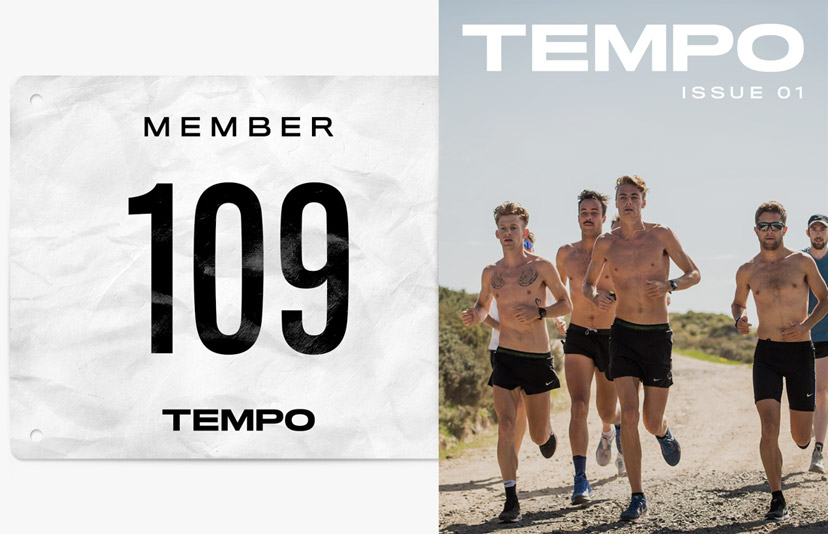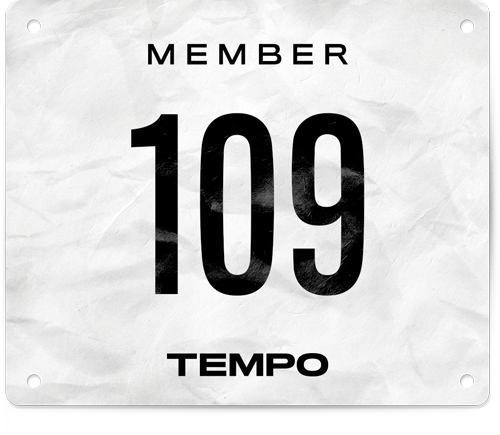Culture
This is Haiti like you've never seen
Run Across Haiti is improving local communities through running
I first stumbled on the Run Across Haiti while researching Esther Park, an inspiring American runner that we featured in this piece for International Women's Day.
When I leared that the 2018 edition of Run Across Haiti was only weeks away, I knew we had to cover it on Tempo for a number of reasons.
Luckily, organizer Vivien Luk and photographer Duy Nguyen were on board to share the stories from this amazing adventure.
Enjoy this fantastic piece from Viv and Duy, and be ready to be inspired.
We created the Run Across Haiti in 2015 to show that Haiti is not a place to be feared or to be pitied, and to raise funds to accompany families in Haiti out of poverty through good, dignified jobs. Our organization’s founder along with one of our early supporters ran the Sahara Race of the 4 Desert Series the previous year to raise money for our work. It's a 5-day self-supported 155-mile course. Both of them completed the race with about a toenail left each, and in the end, we raised $55,000 to support the families we serve in Haiti.
The set-up is simple. Runners run across the entire country of Haiti, north to south, coast to coast. Total mileage is about 200 miles (approx. 320km) over 7 days. We do about a marathon a day and a double marathon on the final day, one town to the next.
Each day begins at the hotel or guesthouse we stay at the previous night and ends at the next spot where our team rests. They line up at the starting line at 5am each morning, with the exception of the double marathon, which kicks off at midnight with a 12-hour turnaround from the previous marathon. It’s really an 80-mile finish in 36-hours, but splitting it up sounds slightly more manageable.
This is a run that’s fully supported by a crew of volunteers and staff members. It’s not a race, but an adventure run to gain perspective on a country that not very many people know much about.
We decided not to turn this into a race because we wanted to provide our runners time to take it all in, to let Haiti wash over them. When you see a country on foot, at 5-miles an hour, you gain a whole different perspective than sitting in a caged truck with bodyguards. You get to talk to people and make friends along the way. You see, smell, and hear things that you wouldn’t otherwise. You come up with a whole different set of questions to explore. You build more empathy by getting a little closer to the day to day struggles and milestones.
"You see the good, the ugly, and everything in between. It’s unfiltered.
Our runners get to tell their own stories, share their own versions of Haiti"
Having taken over 600 guests to Haiti, we’ve heard a myriad of questions and viewpoints. Most people know what they know about Haiti through the articles they’ve read. It’s the place that had the disaster. It’s really poor, right? Isn’t it next to the Dominican Republic? If so, why is it so much worse than its neighbour?
We get it. We’ve read these articles as well, but we’ve seen another side of Haiti that we’ve not read much about. It’s a side that involves people we now call friends and family, landscapes that we dream of returning to, miles and miles of glorious fields where people are working to make a living, beautiful mountains beyond mountains, a sunrise that would leave you breathless.
The media feeds us so much on a day to day basis, and this run offers an opportunity for individuals to build their own perspectives about the country we’ve come to love.
Day 1 - 34 miles - Cap Haitien to Plaisance
Runners have trained for months to get to this day. We’re up at breakfast by 4am, out on the coast by 5am to finally get started on the journey. It’s a rude awakening, a morning of dodging traffic and whatever that comes your way.
A little over 20 miles in you hit your first big mountain, with over 1,500 ft elevation within a few short miles. It’s hot, dusty, and brutal, but it offers some of the best views ever.
"Today was about soaking in the culture of Haiti. On my run, I saw how the Haitian folks operate their day early before sunrise.
Cap-Haitien felt like Armageddon. The blaring horns and the thick smoke of burning diesel and trash.
This is their life. Their culture. Welcome to Haiti, Joe"
Joseph Kim
"Approximately mile 26-ish I saw many families and many kids. Some of the kids ran up to me and some ran side-by-side to me. All of them had smiles. I immediately felt pure freedom and joy from this as much they did too.
My mantra/fuel for this segment to Plaissance was ‘run freely and live simply’”
Joseph Kim
Day 2 - 13 miles - Plaisance to Ennery
Plaisance is mountain filled with voodoo culture. You’ve hit a certain amount of elevation where it’s misty and foggy until day breaks. You start the day in the dark, running your first 7 miles on more switchbacks until you summit. As your joints and muscles get used to the climb, you get 7 miles of downhill that just feels like a hammer to nail on your entire body. You’re rewarded with a beautiful hotel in Ennery after camping out at a local high school the previous night.
Day 3 - 20 miles - Ennery to Gonaives
This day is mad hot as we move our way out of the mountains and into our first city center. Gonaives is the agricultural capital of the country. You’re greeted by markets big and small, and they’re packed. Large groups of people are seeing foreign runners speed by as they’re selling produce and meat. You’re squeezing between cars and people, some friendly, some not, and you’re also getting the worst of the fumes from cars and trucks. Most people, even seasoned runners, aren’t use to running more than 2 back to back days. Today, the fatigue and the doubts appear.
"There is no denying the immense devastation that this country has been through and how desperately poor it is.
But if you look past the unsettling, you see picturesque rugged mountains that are unbelievably breathtaking. You also can see the hope, relationships, joy, and love within the Haitian people"
Noelle Damato
Day 4 - 34 miles - Gonaives to Saint Marc
The Long Day.
Although the same amount of distance as the first day, because you’ve already traversed close to 70 miles, this day feels exceptionally long and impossible. It’s also incredibly flat and straight. The majority of the course is on the major single lane highway that offers little space for running, no shade from the sun, and ends with a 2-mile stretch across the entire town of Saint Marc at the busiest time of the day. It’s brutal.
Day 5 - 20 miles - Saint Marc to Guilbert
The day before the holiday! Faces are long on this day. Everyone is hurting and they just want to make it to rest day. They’re focused but tired, and know how much they need to recover to make the final 80 mile run to the finish line. You’re running in parallel to the ocean. It teases you with the most faint sounds of waves as you make your way to it. Despite the location, there are no cool breezes, and those blisters don’t do so well on this day.
Day 6 - rest day at Wahoo Bay
Ah, if you’ve made it this far, you do whatever it takes to get to that finish line. We make a trip to our communities, Menelas and Molea, to meet the families we’re running for and help our runners get some much needed inspiration.
Our Haitian crew members show off their homes and introduce their families to the whole team with so much pride, knowing how far they’ve come and how much each year’s run has contributed to their progress.
Runners also get a tour of the country’s largest open landfill, Molea, where 2,000 people live. There, we’ve formed what’s called the First Mile Coalition, an initiative to end undignified child labor. The team takes in the impact that has been made by previous Run Across Haiti teams and learn about the work they get to continue.
Day 7 - 27 miles - Guilbert to Port-au-Prince
The nerves set in, not because there’s 27 miles ahead of everybody, but because there are only 12 hours to rest before the monster day to the finish line. It’s a simple math game. The faster you get to the finish line today, the more time you get to rest. The only thing standing between you and the recover is 27 miles of heat and cars speedy by inches away from you.
This is not a day our runners drop out, this is a victory day where runners are greeted by the families they met the previous day at the finish line and they know they’re so close to completing 200 miles.
Day 8 - 52 miles - Port-au-Prince to Jacmel
The Monster Day. We start at midnight running in pods. It’s pitch black, and putrid smells fill the air as we run through Port-au-Prince. It’s that leftover raw fish in the fish market smell, the end of the day burned garbage smell, the dogs chasing you in the middle of the night, and the stomach being rumbled by nerves kind of run. It’s not fun. Runners drop out early on this night. You get through the first half marathon with your pod and off you go to the final finish line.
The first half of the run is flat. You run to the base of the mountain that takes you over and down to Jacmel. You run up the mountain, 4,500 feet up, 4,500 down. Somewhere along the up, you’re rewarded with the sunrise and songs from small churches. Some parts of the mountain are so steep, the only thing left to do is to slow down and hike. You keep thinking that there’s no way for the roads to go up, but up you go. You review your miles in your head and you can start to see the town of Jacmel, but still, up you go.
Hallucination sets in, you feel like you can no longer stand the pain, and with every muscle and joint aching, you start to run down the mountain. Finally, you made your way down, and there are about a million turns through the town to get to the finish line. A final test of character. You made it, not just with your feet, but with your heart, right into the southern coast of the country.
One of the most frequently asked questions is why would we run so damn far? If we want to just do a run, why not run a 5K, or a 10K, like civilized people do? Truth is, we know it’s crazy, but running a ridiculous amount of miles in a country that’s not known for running gives us a platform to talk about the things we want to talk about, and that’s ending abject poverty.
Doing 200 miles in one go is somewhat symbolic to the work that we do. There are no silver bullets to ending abject poverty. We roll up our sleeves and work together to find resources to solutions that our families spend their day to day thinking about. When we accompany a family, we stick with them until they no longer need us.
"As a runner, you spend a lot of time in your own head. Instead of thinking of the difficulty of running this last day, I found myself thinking of where I had been and what I had accomplished.
I feel very appreciative that I was given a chance to come to Haiti, to raise and donate money, and to be part of something that I think is going to reap a harvest for many people in Haiti"
Cam Stauffer
Do you have what it takes to run across Haiti? Apply for the 2019 Run Across Haiti here.


